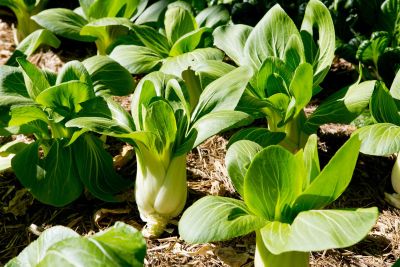How to Grow Bok Choy
As a fall crop, bok choy care is simple. It can be direct-seeded ¼ to ½ inch (6 to 13 mm.) deep in rich, fertile garden soil. In areas where rains create saturated conditions, good drainage is recommended. Fall crops can be planted in full sun. Planting bok choy in small batches every two weeks will supply a steady and continuous harvest. Planting bok choy for a spring crop is more challenging. As a biennial, bok choy is extremely prone to bolting. This occurs when exposure to frost or extended temperatures below 50 degrees F. (10 C.) is followed by a rise in temperatures. Winter conditions, followed by a warm spell, triggers bok choy into its second-year flowering stage. To prevent spring crops from bolting, try starting seedlings indoors 4 weeks before the final frost date. Use a quality seed starting soil mix into which bok choy seeds can be sowed to a depth of ¼ to ½ inch (6 to 13 mm.). Then hold off transplanting bok choy into the garden until all danger of cold weather has passed. Space plants 6 to 12 inches (15 to 30 cm.) apart and mulch to keep soil cool and moist. To further discourage bolting when growing bok choy as a spring crop, try planting bok choy in partial shade and keep it well-watered. Growing the smaller or “baby” varieties of bok choy can also help as they mature 10 to 14 days sooner than the standard size. Additionally, growing bok choy as a spring crop leaves it more vulnerable to pests, such as cabbage loopers, flea beetles and aphids. Row covers may be necessary in order to harvest blemish-free leaves.
When to Harvest Bok Choy
The mature size of bok choy depends upon the variety. The standard varieties can reach 12 to 24 inches (30 to 61 cm.) tall, while baby bok choy matures under 10 inches (25 cm.). However, harvesting bok choy can begin as soon as usable leaves have developed. Young, tender plants which were culled when thinning bok choy can be used in fresh salads or tossed in stir fries. Some standard-size varieties can also be picked young and resemble baby bok choy plants. It’s best to monitor spring crops for early signs of flowering. If plants begin to bolt, harvest immediately to prevent total loss of the crop. Fall crops can often be held in the garden until needed and remain usable even after frosts and light freezes. To harvest, use a knife to cut the plant at ground level. Whenever possible, plan to harvest bok choy in usable amounts, as it has a much shorter shelf life and is more difficult to preserve than other members of the cabbage family. When stored unwashed in a plastic bag, bok choy lasts about 3 to 4 days in the refrigerator.
